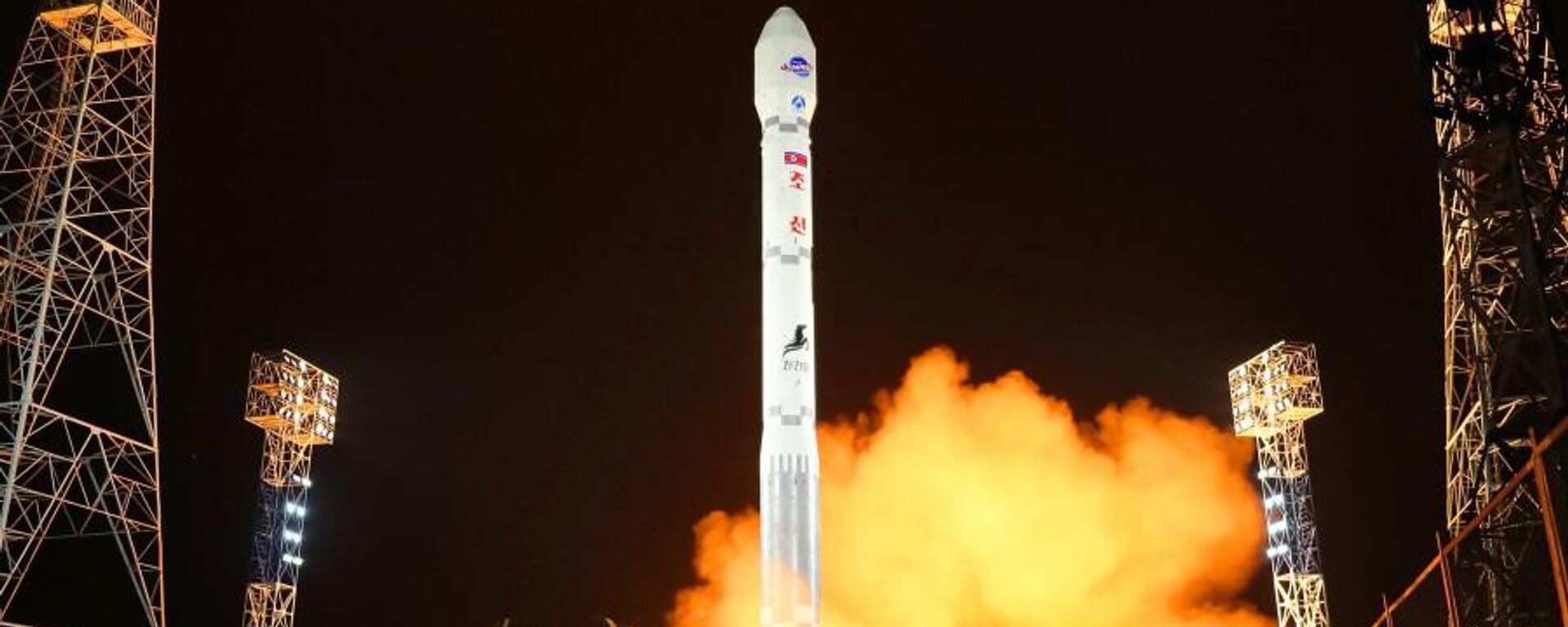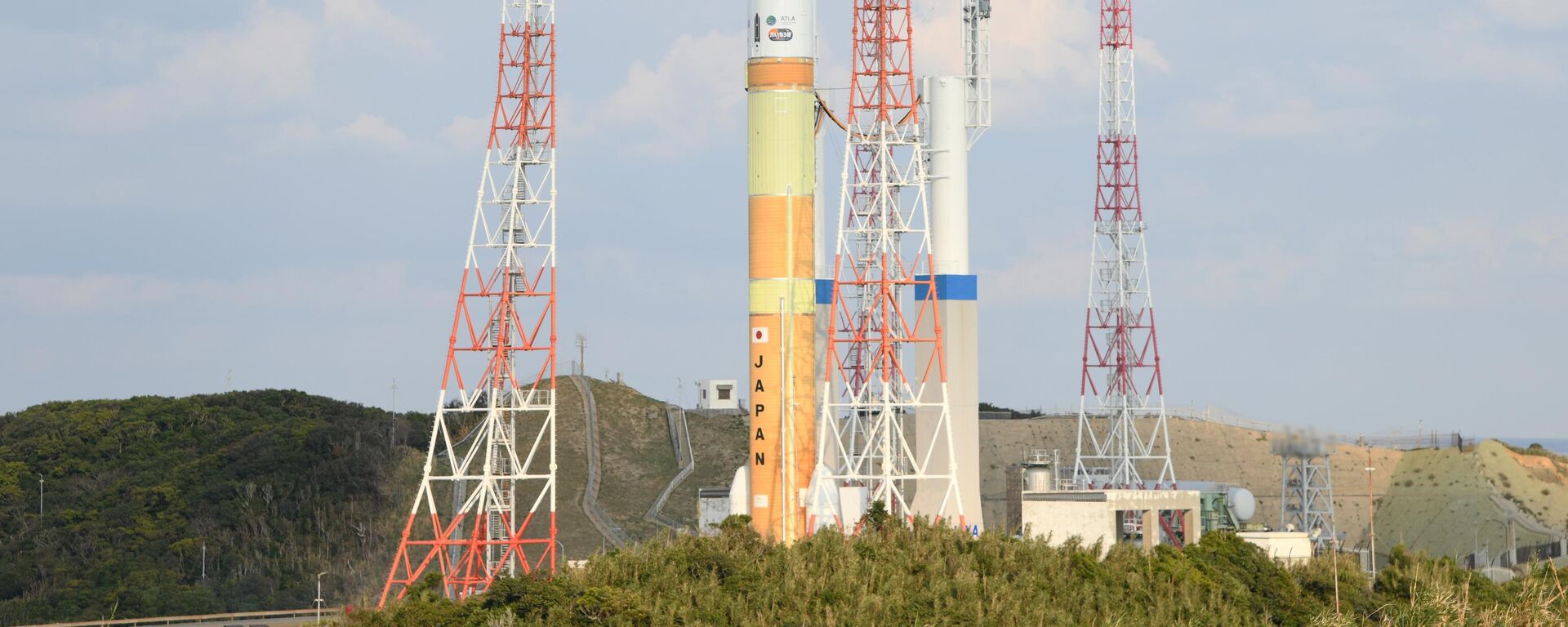https://sputnikglobe.com/20231128/north-koreas-spy-satellite-makes-pyongyang-full-fledged-member-of-space-club-1115270011.html
North Korea’s Spy Satellite Makes Pyongyang ‘Full-Fledged Member of Space Club’
North Korea’s Spy Satellite Makes Pyongyang ‘Full-Fledged Member of Space Club’
Sputnik International
North Korea’s new reconnaissance satellite has placed it among an elite group of nations with autonomous space capabilities, but the device will have powerful strategic effects, too.
2023-11-28T21:39+0000
2023-11-28T21:39+0000
2023-11-28T21:37+0000
analysis
alexei leonkov
pyongyang
north korea
spy satellite
ballistic missiles
https://cdn1.img.sputnikglobe.com/img/07e7/0b/16/1115123475_0:24:900:530_1920x0_80_0_0_3d7fb3499bc9467b5648a4f79d2bd1f5.jpg
Last week, the Democratic People’s Republic of Korea (DPRK) announced it had successfully launched a reconnaissance satellite into orbit. Called Malligyong-1, the satellite was launched on a Chollima-1 carrier rocket from the Sohae Satellite Space Launching Station on the country’s western coast.On Tuesday, Pyongyang said the new satellite had already been tested out on its chief adversary, photographing the White House, Pentagon, and aircraft carriers at the Norfolk naval base. The US said it couldn’t verify the North Korean claims.Moscow-based military expert Alexey Leonkov told Sputnik on Tuesday that the DPRK’s accomplishment had placed it on par with a handful of other space-faring nations.Leonkov said accusations from the United States that Pyongyang had help from Russia with the satellite launch “are not true.”“The fact is that back in 2016, American intelligence reported that Ukraine was actively involved in the DPRK's missile program and, in particular, named such two structures as the Yuzhnoye Design Bureau and Yuzhmash,” he said, referring to two Ukrainian state-owned design bureaus, the former of which produced the Zenit rocket and the latter of which produces rocket parts such as engines.“It was in 2016 that tests of new intermediate- and intercontinental-range ballistic missiles began. In the end, it resulted in the appearance of the reconnaissance satellite, which, I think, will not be alone.”“Both the US and Japan will likely be annoyed by this because the images from this satellite can and will be used for military purposes,” he added. “That is, they will be used to determine coordinates and objects. If the satellite operates in a coordinate system, then further photographic images will be quite enough to provide target designation for an intercontinental ballistic missile.”Leonkov further said the emergence of a North Korean space program would make the small socialist state “a member of the club of space powers,” something even South Korea has not achieved, thanks to a domineering hand by Washington that limited Seoul to launching its satellites on American rockets.“In other words, calling South Korea a full-fledged member of the space club can be conditional. South Korea most likely belongs to the states that do not have their own spaceports and use the services of spaceports of other states. And after the launch of such a satellite, North Korea entered not just the club of space powers, but the club of those powers that have military reconnaissance satellites,” he said.
https://sputnikglobe.com/20231127/north-korea-launches-satellite-to-keep-up-with-us-military-moves---un-envoy--1115238712.html
https://sputnikglobe.com/20231124/japan-to-splurge-1-trillion-in-asian-space-race-with-india-china-and-dprk-1115184109.html
pyongyang
north korea
Sputnik International
feedback@sputniknews.com
+74956456601
MIA „Rossiya Segodnya“
2023
News
en_EN
Sputnik International
feedback@sputniknews.com
+74956456601
MIA „Rossiya Segodnya“
Sputnik International
feedback@sputniknews.com
+74956456601
MIA „Rossiya Segodnya“
does north korea have a spy satellite, did north korea photograph the white house, korea nuclear weapons
does north korea have a spy satellite, did north korea photograph the white house, korea nuclear weapons
North Korea’s Spy Satellite Makes Pyongyang ‘Full-Fledged Member of Space Club’
North Korea’s new reconnaissance satellite has placed it among an elite group of nations with autonomous space capabilities, but the device will have powerful strategic effects, too, such as increasing the deterrence powers of the country’s nuclear-tipped ballistic missiles, an expert said.
Last week, the Democratic People’s Republic of Korea (DPRK) announced it had successfully
launched a reconnaissance satellite into orbit. Called Malligyong-1, the satellite was launched on a Chollima-1 carrier rocket from the Sohae Satellite Space Launching Station on the country’s western coast.
On Tuesday, Pyongyang said the new satellite had already been tested out on its chief adversary, photographing the White House, Pentagon, and aircraft carriers at the Norfolk naval base. The US said
it couldn’t verify the North Korean claims.
Moscow-based military expert Alexey Leonkov told Sputnik on Tuesday that the DPRK’s accomplishment had placed it on par with a handful of other space-faring nations.
“The DPRK's space program has a long history. They have twice launched telecommunications satellites into space. One of them turned out to be successful, the other not so much. But they corrected their mistakes and created an optical-electronic reconnaissance satellite, which took these pictures. And when they showed how the rocket was launched, it was a completely normal space rocket, a three-stage rocket, very reminiscent of the [Soviet] Zenit rocket,” he said.
Leonkov said accusations from the United States that Pyongyang had help from Russia with the satellite launch “are not true.”

27 November 2023, 17:06 GMT
“The fact is that back in 2016,
American intelligence reported that Ukraine was actively involved in the DPRK's missile program and, in particular, named such two structures as the Yuzhnoye Design Bureau and Yuzhmash,” he said, referring to two Ukrainian state-owned design bureaus, the former of which produced the Zenit rocket and the latter of which produces rocket parts such as engines.
“For about 10 years, representatives of these two scientific and technical divisions of the company traveled to the DPRK, where they helped them create a missile program. And thanks to them, and, as they say, the perseverance of North Korean engineers, such a missile program appeared.”
“It was in 2016 that tests of new intermediate- and intercontinental-range ballistic missiles began. In the end, it resulted in the appearance of the reconnaissance satellite, which, I think, will not be alone.”
“Both the US and Japan will likely be annoyed by this because the images from this satellite can and will be used for military purposes,” he added. “That is, they will be used to determine coordinates and objects. If the satellite operates in a coordinate system, then further photographic images will be quite enough to provide target designation for an intercontinental ballistic missile.”
“Most of all, of course, this has strained the Japanese, because all the anti-missile air defense that they are building with the help of the Americans will not give the results they expect: the American missile defense system may not be able to resist Korean intercontinental missiles. But what bothers the Japanese is that the Koreans can now update their digital maps and use them for target designation.”
Leonkov further said the emergence of a North Korean space program would make the small socialist state “a member of the club of space powers,” something even South Korea has not achieved, thanks to a domineering hand by Washington that limited Seoul to launching its satellites on American rockets.

24 November 2023, 12:54 GMT
“In other words, calling South Korea a full-fledged member of the space club can be conditional. South Korea most likely belongs to the states that do not have their own spaceports and use the services of spaceports of other states. And after the launch of such a satellite, North Korea entered not just the club of space powers, but the club of those powers that have military reconnaissance satellites,” he said.




